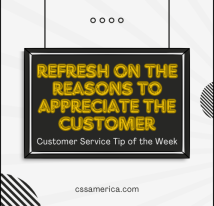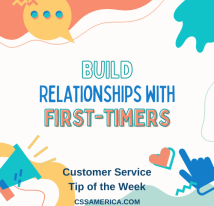
People great at customer service typically have the skill to artfully and effectively ask questions. By asking questions, you’re showing your interest, gaining control of the conversation, and learning about the specifics of the issue or need so you can tailor your response.
In a past Tip of the Week, I noted that asking questions (done incorrectly) can make it seem like you’re interrogating the customer – firing question after question at the customer.
There’s another risk to be wary of when asking questions of the other person. It’s the risk of the customer feeling like you’re questioning them – their motives, their honesty, their integrity, their intelligence.
You can run this risk primarily based on how your questions are delivered, not necessarily due to the questions themselves. Think body language and tone.
Imagine someone asking you the following question with their arms crossed, rolling their eyes, and emphasizing ‘that’ – “Why did you do that?”
Consider an employee with their eyebrow raised and asking you “So that was an accident?” You can almost feel them making air quotes as they say the word accident.
What if the employee said to you: “So what EX-ACT-LY was the purpose of that?”
When you want to ask the right questions for the right reasons, remember there’s a right way (and a wrong way) to do so. Ensure that your body language and tone don’t keep you from delivering a great experience.
Make sure you question without questioning.
Signup for FREE Tips! Contact Us More Resources for You Visit Our Home Page























